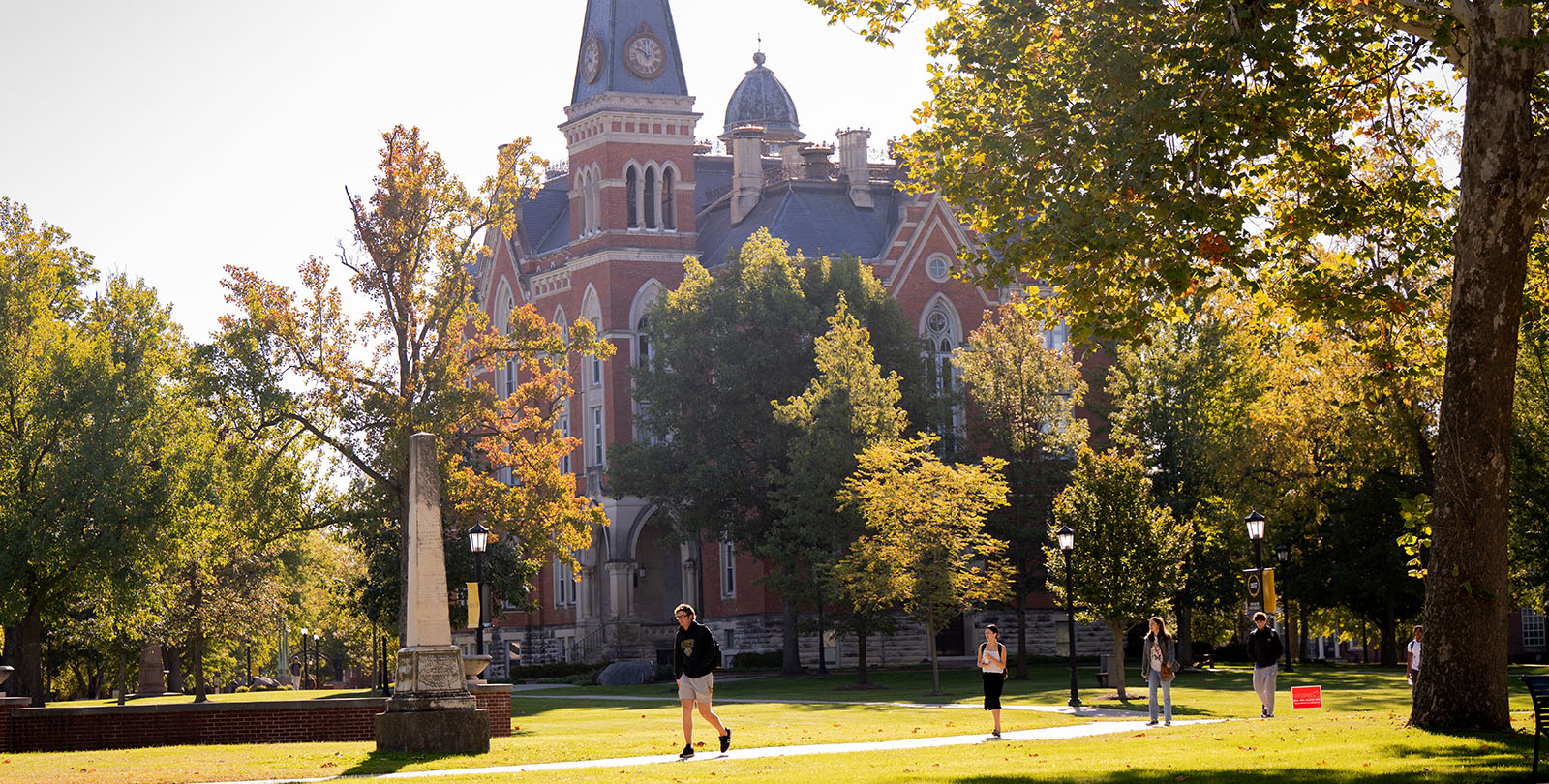Southeast Asia Trekkers Discover Different Things
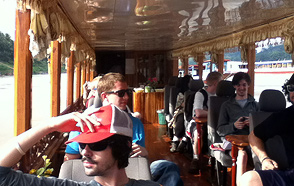
The DePauw group traveling by riverboat on the Mekong Delta.
February 29, 2012
For three weeks in January, DePauw students and professors toured Vietnam, Laos and Cambodia, exploring cities and villages, rivers and ruins. The trip was meant to uncover how a French colonial past still affects life on the Indochinese peninsula, although what the group found depends on whom you ask.
Extending south from China, French Indochina was a collection of kingdoms and provinces that France claimed as protectorates. Calling them protectorates, however, is perhaps a bit euphemistic. The French weren’t welcomed as benign administrators. Rather, they won control in wars against China and Siam during the 19th century. And they later lost control in the same manner.
During World War II, France itself was invaded and occupied by Nazi Germany. Though a provisional government was established, France could no longer defend its interests abroad. The Ho Chi Minh-led Vietnamese independence movement ultimately forced France into a peace agreement that returned Indochina to its peoples at the 1954 Geneva Conference.
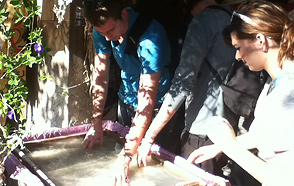
Samuel A. Autman, assistant professor of English, and Cheira Belguellaoui, assistant professor of modern languages, organized the trip.
(Left: Two students learn to make paper in Laos.)
Autman, who traveled to French Polynesia during a previous Winter Term, brought some perspective with him on his first trip to Indochina. Although francophones are nowhere near as common in Hanoi as on Tahiti – only 5 percent of the Vietnamese population speaks French – Autman says the cultural residue of France’s occupation remains intact.
“Southeast Asia is completely free of French dominance, though the architecture and thumbprint of France still prevail there,” Autman says.
Though the trip focused on its French connection, Indochina’s many monuments to beauty and violence couldn’t be ignored. Its colonial history is sandwiched between a remarkable cultural tradition and the decades of bloodshed that followed independence.
Buddhism has been the dominant religion of Southeast Asia for centuries, and its temples fill the region. The group traveled to many Buddhist sites and ruins, including Angkor Wat (pictured), the famous 12th-century temple complex. A symbol of the Cambodian people, Angkor Wat even appears on the national flag.
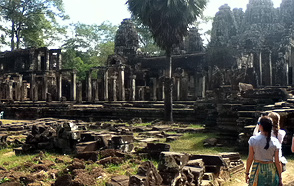 One student, senior William R. Carpenter, was so moved by the time he spent with Buddhist monks during the trip that he now plans to become one after graduation.
One student, senior William R. Carpenter, was so moved by the time he spent with Buddhist monks during the trip that he now plans to become one after graduation.
“I had been interested in Buddhism and Asian culture well before this trip, but actually going to these places completely changed the direction of my life,” he says.
Scattered throughout Indochina are also reminders of a sadder history. In Cambodia the group visited two sites of the Khmer Rouge’s atrocities. During the 1970s, the regime murdered more than 1 million innocent men, women and children. Most of the victims were buried in mass graves known as the Killing Fields.
The Khmer Rouge’s rise to power came during the instability of the Vietnam War, which often spilled over Vietnam’s border. The war was an extension of the conflict that originally pushed the French out of Indochina, pitting communist revolutionaries against Western-aligned governments. One of the most shocking aspects of the trip for the students was visiting the National Rehabilitation Centre in Vientiane, Laos, and seeing bomb remnants from the little-known bombing campaign that the United States waged against Laos. While in Ho Chi Minh City, formerly Saigon, the group visited the Cu Chi tunnel network beneath the city that the Viet Cong used in a guerilla war against Americans and the South Vietnamese.
Decades later, the scars of war in Southeast Asia are beginning to disappear, and former enemies now greet each other openly.
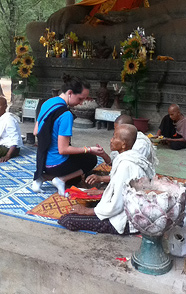
“Our trip far exceeded anything I could have imagined on an educational and experiential level for the students,” Autman says. “It was so far from a destination that many Americans would visit, and we were steeped in the food and transportation styles from the other side of the world, literally.”
(Left: A student receives a blessing outside a Buddhist temple in Cambodia.)
For most of the students, the trip was a chance to visit a place almost completely alien to them. At least two of the travelers, however, were exceptions.
Sophomore Phua Xiong was born to Hmong refugees from Laos. During the Vietnam War, the CIA recruited the Hmong, an ethnic minority, to fight against communist forces in neighboring North Vietnam and Laos in what the CIA called the Secret War.
After the fall of Saigon to the North Vietnamese, Hmong fighters and their families fled Laos across the Mekong River into Thailand to escape reprisal. Many Hmong were offered asylum in exchange for their service, and large Hmong-American communities now exist in Minnesota and California. The trip to Laos was Xiong’s first chance to meet relatives who stayed behind and have faced ethnic discrimination ever since.
“Visiting my family in Laos was exciting but sad because I did it without my parents,” Xiong says. “I couldn't share that emotional experience with them – of not just traveling, but also traveling to their homeland. Learning of the ethnic discrimination against my people, I felt so helpless and angered. All I could say to myself at the time was, “This is simply how things are."
Like Xiong, freshman Ruth Thanh Thao Vo had a chance to return to her family’s homeland. Vo grew up hearing stories about how poor the Vietnamese were from her mother, who immigrated to the United States two decades ago. During her trip, Vo says she found a country that is more modern than what her mother remembers.
“It's nice to know that if I ever leave the United States, I will always have another country to call home where I'd be comfortable in the culture,” she says. “I want to return to Vietnam one day to see how far it has progressed, and how much further it will go.”
